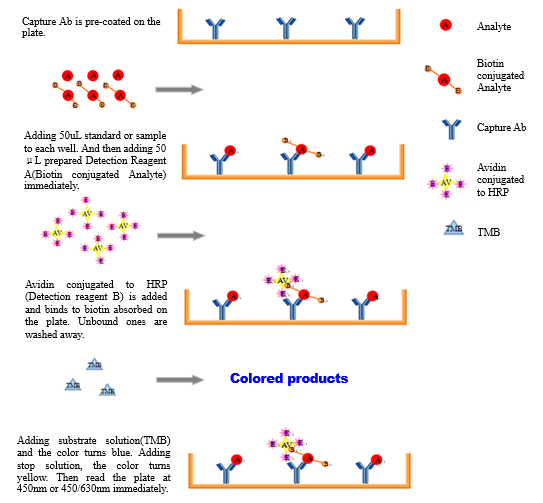Principle of Competitive inhibition Enzyme-linked Immunosorbent Assay Kit
The assay principle of Competitive inhibition Elisa: coat specific antibody to solid carrier, then add antigen to be tested(standard and sample) and biotin-labeled antigen(detection reagent A). The tested antigen and biotin-labeled antigen competitively binds to immobile antibody. After incubation,the unbounded conjugate is washed off. Next, Horseradish Peroxidase (HRP)conjugated by avidin is added, the substrate solution TMB is added after incubation and washing.. TMB becomes blue under catalization of peroxidase, and finally turns to yellow after addition of acid. The higher concentration of tested sample is, the inhibition for bound of labeled antigen and antibody will be more obvious, and lower intensity of color develops. The intensity of color developed is positively correlated with the amount of enzyme but reverse proportional to the concentration of the target molecule in tested sample. O.D value is detected by microplate reader under 450nm wavelength and the concentration of the targets can be calculated. Biomacromolecule can be labeled by multiple biotins and biotin can specifically binds to avidin which is conjugated with enzyme. So detection signal can be amplified to improve sensitivity of immune analysis.
Small molecule antigen or hapten only has a single epitope. However, having two or more epitopes is the basic condition for sandwich Elisa. Regularly, competitive inhibition method is used to detect small molecule antigen or hapten. The assay principle is that tested antigen and enzyme labeled antigen competitively bind to immobile antibody. The higher concentration of antigen in tested sample, the less enzyme labeled antigen binds to immobile antibody, so the lower intensity of color develops after addition of substrate. Therefore, target molecule can be quantified according to the color。The principle is showed below:

